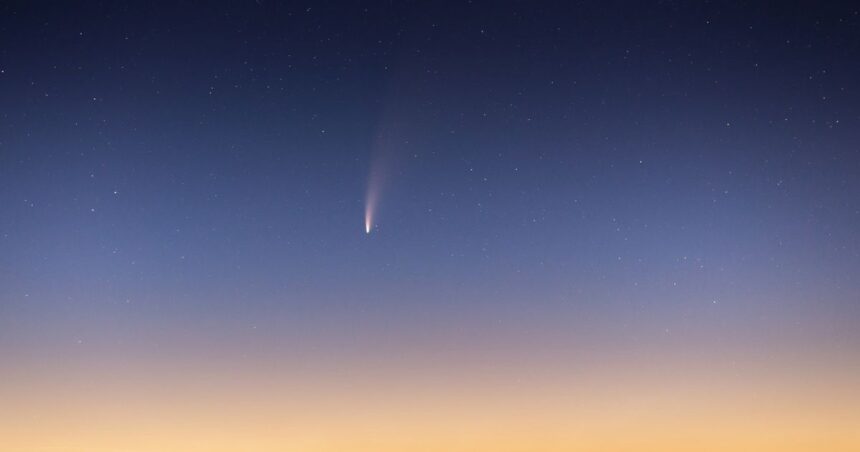Comet Tsuchinshan-ATLAS is set to light up the skies this weekend, and stargazers are in for a treat. On September 27, 2024, this comet will make its closest approach to the sun, a moment known as perihelion. This event is generating a lot of excitement among astronomers and sky enthusiasts alike.
What is Comet Tsuchinshan-ATLAS?
Comet Tsuchinshan-ATLAS, also known as C/2023 A3, was discovered on January 9, 2023, by the Purple Mountain Observatory in China. On February 22, 2023, the Asteroid Terrestrial-impact Last Alert System (ATLAS) verified that the object, which was initially believed to be an asteroid, was really a comet. This comet has been on a long journey through our solar system, and now it’s finally making its grand appearance.
Why is This Weekend Special?
This weekend, Comet Tsuchinshan-ATLAS will be at its brightest as it gets closest to the sun. The comet will be visible in the early morning sky, just before sunrise. For those in the Northern Hemisphere, the best time to see it will be between September 27 and October 1. During this period, the comet will be low on the horizon, so you’ll need a clear view of the eastern sky.
How to See Comet Tsuchinshan-ATLAS
To catch a glimpse of Comet Tsuchinshan-ATLAS, you’ll need to wake up early. The best viewing time is about 45 minutes to an hour before sunrise. Look towards the eastern horizon, slightly to the right of due east. The comet will be low in the sky, so find a spot with an unobstructed view.
You can see better if you use a small telescope or binoculars. The comet’s tail, which is made of gas and dust, will be visible as a faint, glowing streak. If you’re lucky, you might even see it with the naked eye.
What Makes Comet Tsuchinshan-ATLAS Unique?
Comet Tsuchinshan-ATLAS is unique for several reasons. First, its discovery was a collaborative effort between observatories in China and South Africa. Second, its orbit brings it very close to the sun, which means it has the potential to become very bright. Some astronomers predict it could reach a peak brightness of -1 or -2 on the magnitude scale, making it visible even during the day.
Ice bodies known as comets are formed in the solar system’s outermost regions. When they approach the sun, the heat causes the ice to vaporize, creating a glowing coma and a tail. The solar wind causes the tail to point away from the sun constantly.
Comet Tsuchinshan-ATLAS is no different. As it gets closer to the sun, its ice and dust particles are released, forming a spectacular tail. This tail can stretch for millions of kilometers, creating a stunning visual display.
What to Expect After This Weekend
While this weekend offers the best viewing opportunity, Comet Tsuchinshan-ATLAS will continue to be visible for several weeks. It will make its closest approach to Earth on October 14, 2024. During this time, it will be in the constellation Virgo, making it easier to spot.
As the comet moves away from the sun, it will gradually fade. However, it will still be a beautiful sight for those with telescopes. The comet’s tail will become more prominent as it moves through the night sky.
The Best is Yet to Come?
Many astronomers believe that the best is yet to come for Comet Tsuchinshan-ATLAS. As it continues its journey through the solar system, it may become even brighter. This could provide more opportunities for stunning photographs and observations.
In the coming weeks, keep an eye on the sky and stay updated with the latest news. Comet Tsuchinshan-ATLAS is a rare celestial event that you won’t want to miss. Whether you’re an experienced astronomer or a casual stargazer, this comet promises to be a highlight of the year.
Comet Tsuchinshan-ATLAS is a reminder of the beauty and wonder of our universe. Its journey through the solar system is a testament to the dynamic nature of space. So, set your alarm, grab your binoculars, and head outside to witness this spectacular event. The sky is waiting to dazzle you with its cosmic show.
Happy stargazing!





